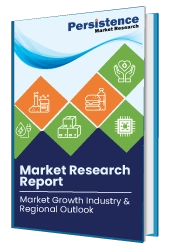ID: PMRREP16096| Upcoming | Format: PDF, Excel, PPT* | Healthcare

Immunofluorescence is the specific antigen and antibody reaction where the antibodies are labeled with a fluorescent dye and the antigen-antibody complex is visualized using fluorescent (UV) microscope. Some of the commonly used fluorochromes include Acridine Orange, Lissamine, Rhodamine, and Calcofluor white. Various factors determine the type of immunofluorescence assay used such as time consumed, cost, complexity, flexibility, sensitivity, cross reactivity and many others.
It is used in all disciplines of biology including medicine for diagnostics and research. Immunofluorescence assays are used to detect specific proteins in cells that may be in specimen, in culture, in tissues, on microbeads and microarrays, etc. Two types of immunofluorescence assays are usually performed: Direct and Indirect immunofluorescence.
Direct immunofluorescence used less often as the antibody against the molecule of interest is conjugated chemically to a fluorescent dye, so to spot every antigen, the specific antibody will have to be conjugated with FITC. In indirect immunofluorescence assay, the antibody specific for the molecule of interest i.e. the primary antibody is not labeled, and the second anti-immunoglobulin antibody focused toward the first antibody i.e. the secondary antibody is tagged with some fluorescent dye.
Indirect fluorescence is used more commonly as the tagged secondary antibody and can be used to detect many different antigens. However, the primary antibody will have to be specific for the antigen to be detected.
The fluorescence can be read as a qualitative result or quantitative result using fluorescence microscopy. The fluorescence can also be quantified using a flow cytometer, array scanner or automated imaging instrument.
The improved versions of kits and reagents increases its demand. Increase in the number of cancer incidences and various infectious diseases rising the demand. Investments in research by various governmental and non-governmental organizations is upsurging the demand for these kits. Some of the restraining factors include the potential of cross reactivity, lower signal and higher costs of kits. Introduction of more safer and cost effective tests which diverting the preference of clinicians and researchers from immunofluorescence assays.
|
Technique Type: |
|
|
Product Type: |
|
|
Applications: |
|
|
End User: |
|
|
Geography |
|
A geographic condition regarding the Immunofluorescence assays market, it has been segmented into five key regions: North America, Latin America, Europe, Asia-Pacific and the Middle East & Africa. High incidences of chronic and infectious diseases, laboratory automation, improved technology and favorable reimbursement scenario are some of the factors which have led North America dominating the immunofluorescence assay market.
It is followed by Europe and most of the market in Germany. Asia Pacific is increasing in the immunofluorescence assay market because of the increasing number of market players and rising demand of improved products in diagnostics as well as academic purpose. India, China and Japan are the countries with highest growth rate in Asia Pacific region and increases the chances of business opportunities in these sectors.
Some of the global key players in the Immunofluorescence assays market for manufacturing kits and reagents for diagnosis are Thermofischer, Biorad, Universla Biologicals, Perkin Elmer, Maxvision Biosciences Inc., Euro Diagnostica, Sigma Aldrich and others. Some companies involves in the fluorescence microscope market includes Olympus lifescience, Leica Microsystems, EuroImmun AG.
Delivery Timelines
For more information on this report and its delivery timelines please get in touch with our sales team.
About Author